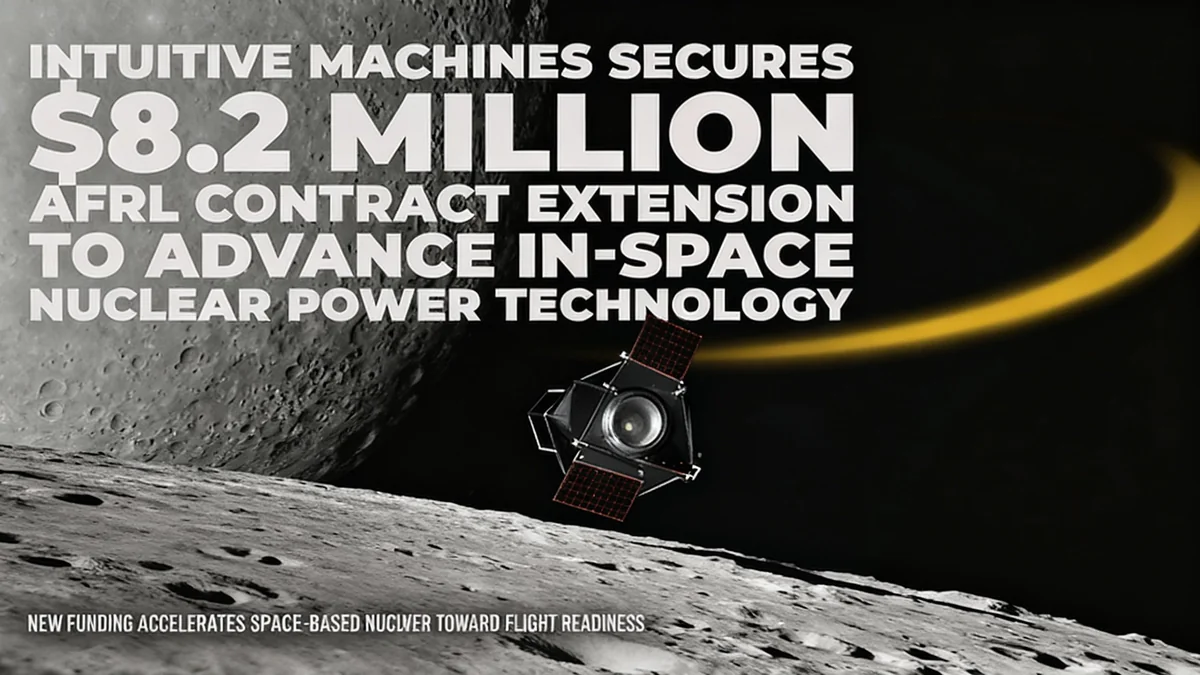Inversion Space, a California-based startup, is developing a new type of spacecraft designed to deliver cargo to any location on Earth from orbit in less than an hour. The company's reusable vehicle, named Arc, aims to revolutionize logistics for both military and commercial applications by pre-positioning goods in space for rapid deployment.
Key Takeaways
- Inversion Space is creating the Arc spacecraft for rapid global cargo delivery directly from Earth's orbit.
- The system is designed to deliver packages to any point on the planet within approximately 60 minutes.
- Initial plans focus on military logistics, with a long-term goal of serving the commercial delivery market.
- The technology relies on a constellation of orbiting capsules that de-orbit on demand, using a parachute for a precise final landing.
A New Model for High-Speed Logistics
The core concept behind Inversion Space's plan involves a network of small, pre-loaded cargo capsules orbiting the Earth. Similar in principle to satellite constellations like Starlink, which provide internet, this network would serve as a celestial warehouse. When a delivery is requested, the Arc vehicle closest to the target destination would initiate its return sequence.
This approach bypasses the challenges and delays associated with traditional ground-based launch systems. Instead of waiting for a rocket to be prepared, fueled, and launched, the cargo is already in position, ready for a controlled descent. According to the company, this method could drastically reduce delivery times for critical supplies across vast distances.
The initial target market for this capability is the military, which requires rapid deployment of equipment and supplies to remote or contested areas. However, Inversion Space envisions a future where this technology could support commercial logistics, emergency medical supply delivery, and other time-sensitive operations.
Strategic Advantage of Orbital Positioning
A primary reason for placing cargo in orbit ahead of time is to avoid the geopolitical risks of on-demand rocket launches. A sudden launch from the ground could be misinterpreted by other nations as a ballistic missile, potentially triggering a catastrophic international incident. By initiating delivery from an established orbital position, the Arc system is designed to operate without causing such alarms.
The Arc Spacecraft's Technical Design
The Arc vehicle is a compact spacecraft, measuring approximately four feet in diameter and eight feet in length. Its design is based on a "lifting body" shape, an aerodynamic form that generates lift without conventional wings. This allows it to have significant maneuvering capability during its descent through the atmosphere.
From Orbit to Landing
Once a delivery is triggered, the Arc capsule separates from its solar array, which provides power while in orbit, and begins its de-orbit burn. During re-entry, the lifting body design enables the vehicle to adjust its trajectory. Inversion Space states the Arc has a cross-range capability of 621 miles (1,000 kilometers), meaning it can land at a point that far to the side of its original orbital path.
For the final stage of its descent, the Arc deploys a large parachute. This slows the vehicle to a safe landing speed and allows for precise guidance to its target location. This controlled, gentle landing is a key feature of the system.
Safe Handling on the Ground
A critical design choice for the Arc vehicle is its use of non-poisonous fuels. Many spacecraft rely on hypergolic propellants, which are highly toxic and require specialized handling procedures on the ground. By using safer fuels, Inversion Space ensures that personnel can approach and retrieve cargo from the Arc capsule immediately after it lands without risk.
Grounded in Proven Aerospace Concepts
While the idea of one-hour global delivery from space sounds futuristic, the technologies involved are based on well-established principles. The concept of a controlled atmospheric re-entry using a lifting body has been proven by vehicles like the NASA Space Shuttle and the U.S. Space Force's autonomous X-37B spaceplane.
The fundamental technologies, from controlled re-entry to precision parachute landings, have historical precedents in aerospace engineering, lending credibility to the company's ambitious plan.
Even the use of a parachute for a precise, soft landing on land has historical roots. In the 1960s, NASA explored a similar paraglider system for its Gemini capsules as an alternative to ocean splashdowns. According to the National Air and Space Museum, the concept was viable but ultimately shelved due to the tight timelines of the space race, which favored the already proven ocean recovery method.
Current Progress and Future Milestones
Inversion Space has already made tangible progress in developing its technology. The company has successfully conducted tests of the Arc's automated precision landing system, demonstrating the parachute's ability to guide the vehicle to a specific target.
Furthermore, a smaller test vehicle named Ray is currently in orbit. This mission is focused on long-term testing of components and systems in the harsh environment of space, gathering crucial data for the final Arc design. A full end-to-end test, from orbit to a ground landing, has not yet been completed but represents the next major step for the company.
The viability of the concept was also demonstrated in a simulation. Space enthusiast and science communicator Scott Manley recreated the Arc's mission profile in the popular physics-based game Kerbal Space Program. His simulation successfully navigated all phases of the flight, from re-entry and hypersonic maneuvering to the final parachute-assisted landing, providing a compelling visualization of how the system is intended to work.
As Inversion Space continues its development and testing, it moves closer to potentially transforming high-speed logistics, first for defense and eventually for the global commercial market.





